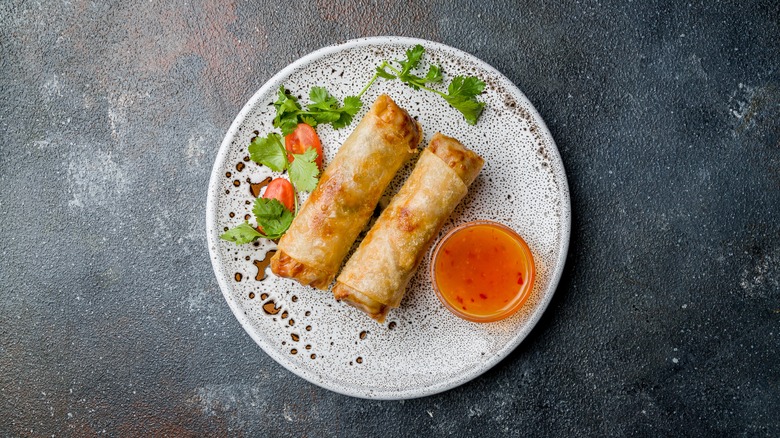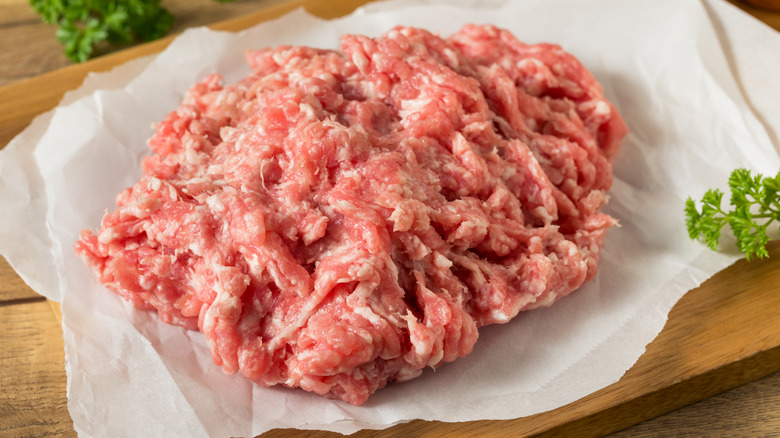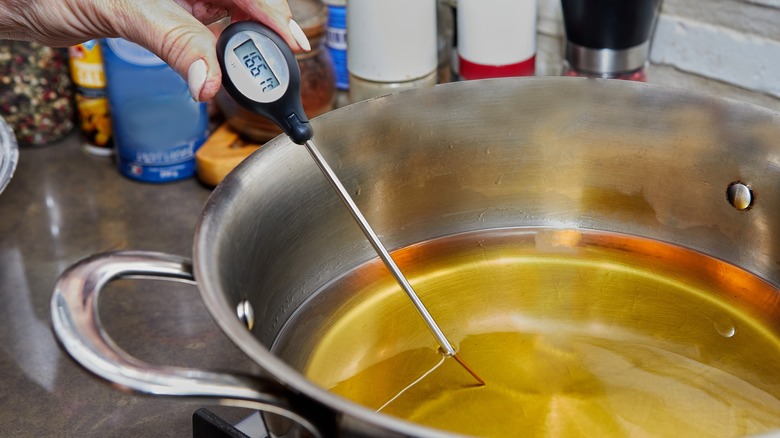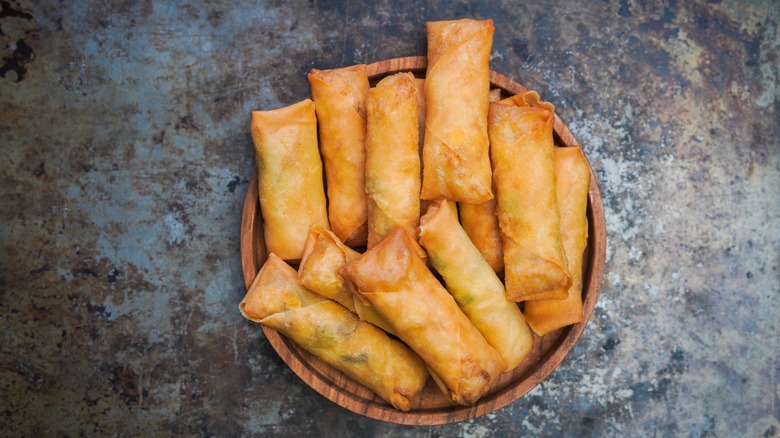What Is Vietnamese Chả Giò And Why Is It So Difficult To Make?
Alongside your trusty chicken phở and bún chảt that you always order at your local go-to Vietnamese place, you might also ask the staff to pack a few extra chả giò onto your plate. These tasty rolls are often mistakenly called egg rolls or spring rolls. However, while egg rolls are made with doughy egg roll wrappers and spring rolls are often served with uncooked rice paper, this specific variation of roll is wrapped in crispy rice paper. They are a staple dish across Vietnam and are known for their unique fillings.
Chả giò, also sometimes referred to as nem rán or chả ram depending on the region of Vietnam you're in, are infamously hard to get right. There are several factors where both luck and precision must align to achieve the perfect golden roll, including the temperature of the oil and the amount of filling stuffed into it. However, if you're lucky enough to be waited on in Vietnam and order from an experienced cook, you'll likely be presented with deliciously crispy chả giò on a bed of lettuce and herbs that's paired with succulent nuoc cham sauce.
Ingredients in chả giò
Typically, ground pork is the meat of choice featured inside chả giò. Rather than fresh shrimp or shredded chicken, like other varieties, the fatty pork in these rolls pairs nicely in terms of flavor and texture with the crispy veggies and chopped noodles stuffed inside.
Finely diced or grated carrots, ginger, garlic, green onion, and wood ear mushrooms are often the vegetables that get mixed into the meaty filling. Chopped glass noodles (often made from mung bean) are also staples, along with fish sauce, oyster sauce, sesame oil, and a few other seasonings, like white pepper and salt, that help enhance a robust umami flavor.
Like other spring roll varieties, chả giò uses clear rice paper wrappers to encase all the mix-ins securely. These wrappers are preferable thanks to their satisfying chew. However, after all the meat and vegetables are packed inside, these rolls get deep fried — this is the step in the process where a lot can go wrong if you're not careful.
Why is making chả giò difficult?
There are several factors that work against you when attempting to correctly deep fry chả giò. To start, the oil must be sitting at the perfect temperature before the rolls get placed in — roughly around 335 degrees Fahrenheit. A temperature that is higher or lower will not adequately crisp the skins.
Another issue could be that the rolls were not prepared properly. About 2 to 3 tablespoons of filling should be spooned into the wrapper, and that wrapper should fully seal in the filling. They should be stretched tightly enough to ensure there are no air bubbles inside — if it is not wrapped perfectly, the roll can burst open during the frying process. However, another challenge cooks often face with this dish is the rice paper wrappers themselves.
These wrappers are mostly made of rice, and unfortunately, this ingredient does not brown or crisp up well. Many people often have opted to use wheat-based wrappers instead because they are much easier to obtain the perfect fry. However, the tender bite and flavor profile this dish is known for is lost in this substitution.
How chả giò is made and eaten
The first step when making chả giò is to create the filling. The ground pork, chopped veggies and noodles, and seasonings all get thoroughly mixed together in one bowl. Once the consistency is relatively smooth, 2 to 3 tablespoons of filling can then be spooned onto each individual rice paper sheet. They are then rolled up and sealed off with a bit of egg wash.
Once all the rolls have been made, they can be placed into the hot oil until they turn golden. They should then be removed and left to dry off on a rack. However, they are fried for a second time for a couple of minutes right before serving to achieve the ultimate crispy texture.
You will see these popular rolls being enjoyed across Vietnam as an appetizer, often paired with the tasty dipping sauce, nuoc cham, along with crispy bibs of lettuce, Thai basil, cilantro, and mint for a mouthful of bursting flavor. However, chả giò are also often served in noodle salads — they're cut into bite-sized pieces and tossed in with the rice noodles, bean sprouts, and sliced vegetables such as cucumber, carrots, and pickled radishes. No matter how you choose to enjoy your chả giò, we're sure these delicious rolls will become a go-to snack in your house.



